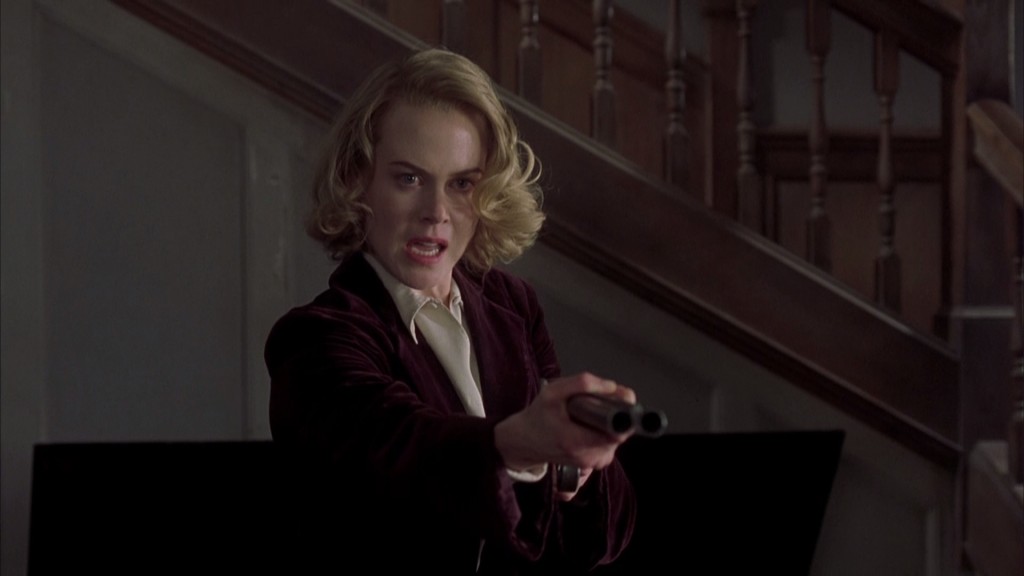Culture
The Bloody Truth: “The Others”

Horror has always lent itself to the ridiculous. Fantastical elements such as seemingly invincible, machete-wielding madmen always seem to be a staple of the genre. Other horror movies prey on the irrational childhood fear of all things that go bump in the night. However, there is always that small kernel of truth to the films that keeps audience members coming back for more. With the Halloween franchise, it was the choice location of Anywhere, USA, or small-town Haddonfield, IL. Even as Michael skewers people alive and arranges the bodies around the house in what is easily one of the most elaborate reveals ever for one man to pull off, there is that underlying feeling of “this town could be anywhere.” It’s what keeps the fear of these movies alive, while the outlandishness and lunacy of the kills provides a sort of security blanket to reassure the viewer that the movie is indeed fiction.
Perhaps that’s what’s most striking about 2001’s The Others. While the film takes place in an unconventional location for many viewers (a post-WWII mansion on the Isle of Jersey) the film preys on very realistic fears. While The Others has your standard PG-13 jump scares and fake-outs, the movie does much more with its emotional intensity. For instance, while many horror movies capitalize on that childlike terror of the dark, The Others manages to do more than that. It situates the darkness as an actual plot point. The children’s photosensitivity ensures that the majority of The Others takes place in darkness. The paranoia of what remains unseen is omnipresent. Furthermore, the post-war setting and the isolated location establish deep-seated feelings of alienation.
However, perhaps the most unnerving part of the film is its relation to real-life events that surrounded its release. In the film’s final moments, it is revealed that Grace (Nicole Kidman) and her children are dead, and they are the ghosts in the house. While it barely registers and is treated as a minute detail, the psychic reveals that Grace, in a fit of depression and desperation, smothered her children before shooting herself. Meanwhile, at the time of the film’s release in August 2001, the nation was caught up in the real-life horror story of Andrea Yates, who several months earlier had drowned her five children before calling the police.
The Others does not belabor the way that Grace and her children die, the uncanny and eerie similarity is unsettling to say the least. Most horror movies feature some nameless or faceless villain who mercilessly rips apart a bevy of sex-starved teenagers. Not only does the killer in The Others have a name and a face, but she has been the audience’s main point of identification for the bulk of the movie. Furthermore, Grace is a mother. Grace is the mother of the two children whom she is responsible for killing. While it seems difficult to believe that director Alejandro Amenabar had intended to exploit the unfortunate similarity, it makes The Others unsettling in its topicality.
Not only is the idea of a mother killing her children horrifying to think about, but it’s even more horrifying to consider that it may be true. As evidenced by the current events at the time the movie was released, the untimely ending of Grace and her two children is all too true. While The Others certainly has its more fantastic moments, such as the inclusion of ghosts to begin with, the film is grounded in two core concepts. On the one hand, the film is very dedicated to realism. The existence of ghosts is a major source of contention for Grace (a non-believer) and her daughter Anne. This makes the revelation at the end of the film all the more powerful. Furthermore, many horror movies are dedicated to the exploitation of emotions, such as the audience’s fear. The Others is very much invested in the audience having an emotional reaction. This adds to the mixture of fear and sadness when it is revealed that Grace killed her kids.
The Others is truly an exceptional horror film. The emotional complexity of the story paired with the standard horror conventions one have come to expect from these types of films makes The Others a powerful addition to the genre. However, it is the unfortunate and unavoidable similarities between the film’s ending and the Andrea Yates news story breaking at the time that make The Others almost uncomfortably real. Even with its more outlandish elements, such as ghostly figures, Amenabar works to ground his film in an alarmingly relatable world, despite the film’s setting.